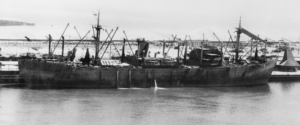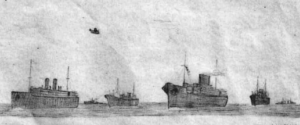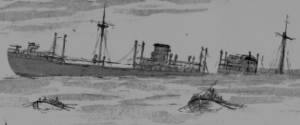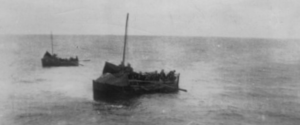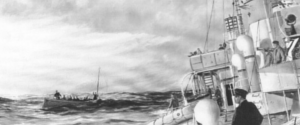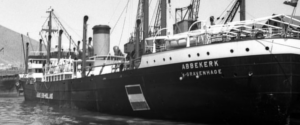The Tjilatjap Exodus: evacuation ship

25 February 1942. The following week Abbekerk and her crew find themselves in the middle of what later will be known as the ‘Dunkirk of the Dutch East Indies’ and the ‘Tjilatjap Exodus’. In these desperate and chaotic days thousands of military and civilians try to escape the inevitable Japanese invasion of Java. Many never reach the ships or planes to take them out. And of those who did, hundreds will be killed when those ships and planes are intercepted by the ample Japanese forces.
As so many people were involved and so much happened in a very short time, there will be a daily coverage in the ‘today: 75 years ago’ story of Abbekerk.

Japanese advance in Malaya and the the Dutch East Indies.
(Source: the United States Military Academy Department of History)
Military situation at this point:
Java is the ‘last allied stand’ in the Dutch East Indies and western Pacific. The Island has been flooded by retreating military units and fleeing civilians. Not only from Singapore and nearby Islands but from as far as the Philippines. Only a small surface fleet of cruisers and destroyers is left to stop the Japanese onslaught. Totally outnumbered, exhausted after months of convoy escort duties, several engagements with the enemy and days of in vain searching for the enemy, chances are small they can do more than slow the enemy down. The Japanese have total air superiority and the Allies try desperately , and up till the last days, to get fighter planes to Java. The freighter Seawitch (26 crated P40s planes) and seaplane tender Langley (32 P40’s, ready to fly, pilots on board) are only days from Tjilatjap now and a makeshift runway is being build close to the port.
Tjilatjap
The Port of Tjilatjap is not suited for the role. It’s in fact a small bay with mooring spots and only few quays and has a narrow and shallow entrance. Now over 30 ships of all sizes occupy every mooring buoy and spot at the quays. Abbekerk is docked at one of those quays and finally her crew is told why they are there.
The unloading of the ammo was stopped. We found that the bottom holds were still loaded to the top. The hatches could just be closed without divulging what was underneath. At the same time a gang of workers came aboard who, clearly in great haste, started to build a long row of latrines along the railing above a wide gutter which led overboard. In addition they brought kitchen materials and food on board. It was not long before we were told what we could expect. We were being prepared as an evacuation ship for the personnel of the forces. Members of the Army, Air Force and Navy of many different nations were to be ferried to Australia. We thought: “you need an entire fleet for this†and also could not wait to get it over with and leave.
Ass Engineer Adriaan Kik
Merchant Shipping losses in the area: 25 February Boeroe (Dutch): The cargo ship was torpedoed and sunk south of the Sunda Strait by I-58. All 70 crew made it ashore to Java Head where they were picked up on 28 february by HMAS Bendigo and HMAS Burnie. https://en.wikipedia.org/wiki/List_of_shipwrecks_in_February_1942

